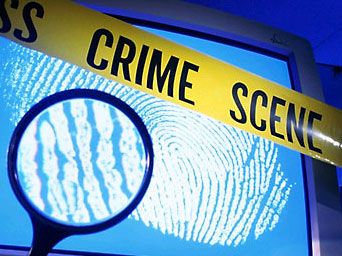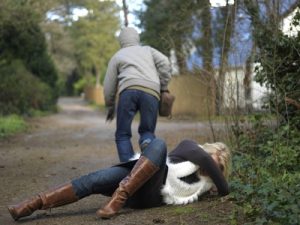
Do It Right The First Time, Because You Won’t Get A Second Chance
With more than 2 million private security officers across the country protecting everything from shopping centers and office buildings to high-rise parking structures and bowling alleys, it is almost certain that sooner or later a security officer will be the first responder to a crime scene. Like police officers who encounter crime scenes, the actions taken or not taken by security personnel can literally make the difference between identifying the perpetrator(s) and successful prosecution or the case ending up in a cold-case file indefinitely.
Basic crime scene response protocol involves numerous inter-related steps. While not exceedingly complex, because all crime scenes are unique and many of the tasks required of the first crime scene responder must be accomplished almost simultaneously, the job can quickly become overwhelming and important steps can be overlooked. Even veteran police officers who have extensive training can overlook basic steps and make fundamental mistakes. By understanding the basic principles of crime scene response and by using a step-by-step approach to all crime scenes, be it a cold burglary or a violent crime like murder, security personnel are in a unique position to play an important role in helping to identify suspects and can help investigators build a strong case for prosecutors.
This article is the first in a series of three articles designed to give the security officer, whether he or she is new on the job or has many years of service, a fundamental and practical primer on crime scene response. This first article introduces the reader to several fundamental forensic principles and discusses the first priority of security personnel upon discovering any crime scene. The second article in this series discusses the need to immediately establish a command presence, the importance and challenges of securing a crime scene. The third article in this series discusses turning over control of the scene to law enforcement, documenting actions and observations, and assessing the response.
Basic understanding of forensic evidence and criminal investigation is essential to effective crime scene response.
Effective crime scene response requires security personnel to follow established protocol, but it is also important for security personnel to have a basic understanding of forensic evidence and criminal investigations. Simply following a mechanical set of rules without understanding the purpose behind the procedure can lead to confusion, uncertainty, and indecision which often results in irreversible errors and omissions. When it comes to crime scene response – the first responder must do it right the first time, because they will not get a second chance.
Locard’s Exchange Principle and “The Golden Hour.”
Two of the most central and fundamental principles of criminal forensics and crime scene investigation are Locrad’s Theory of Transfer coupled with the Theory of Persistence and “The Golden Hour” of criminal investigation.
In the early 1900’s French physician and professor of forensic medicine, Dr. Edmund Locard, proffered the theory of transfer exchange. Postulated on the premise that whenever two objects come in contact with each other – even if just for a brief moment, they both leave something and they both take something from a crime scene, Locard’s Exchange Principle became known as the Theory of Transfer and forms the basis of modern criminal forensics. In Locard’s own words, “It is impossible for a criminal to act, especially considering the intensity of a crime, without leaving traces of this presence.” Under the related Theory of Persistence once the transfer of evidence occurs, it will persist (i.e., remain) until it is disturbed or otherwise degraded.
Understanding that every crime scene contains evidence, whether it is patently obvious to the human eye or only visible under a microscope, is fundamental to crime scene response and something every crime scene responder must always keep foremost in their mind.
The Golden Hour.
The term “Golden Hour” was first coined by the medical profession and was based on the principle that in trauma cases, unless the patient received proper medical care within the first hour, the patient would likely suffer irreversible medical complications or even death. The principle that the first hour is the most crucial hour has been adopted by criminal investigators.
In criminal investigation the “Golden Hour” starts at the moment of discovery and refers to the initial actions taken, or not taken, at a crime scene within the first hour. This first hour starts with the first responder, whether the first responder is an emergency medical responder, police officer, or security personnel. It is during this initial critical hour that the first responder must take actions to ensure that there is a maximum potential for obtaining investigative information and recovery of forensic evidence.
Assess the Crime Scene and Provide Emergency Care.
Succinctly stated, a crime scene is a location where a crime has taken place. It is also a location that may contain evidence as to the nature of the crime and the person or persons responsible for it. Immediately upon discovering any crime scene, whether it is a grisly murder scene or a burglary with the suspect long gone, the initial responder should first STOP, LOOK, LISTEN, and SMELL. The things you see, hear, and smell when you first encounter a crime scene can lead to vitally important investigative clues.
Take a brief moment and assess the crime scene. What do you see? What do you hear? Do you smell anything unusual? Do you see a dead body lying in some bushes? Do you see a half conscious man slumped over on a bench who looks like he has suffered a severe beating? Do you notice that the lock on an office door has been forced open and everything inside has been strewn around? Is someone watching from a distance or walking away from the scene? Does that car half-way down the road with the loud muffler have anything to do with the crime? Does it appear that the perpetrators are gone? These are just a few of the many questions that can suddenly come rushing into your mind.
How long should you pause to assess the crime scene? The amount of time needed to make an initial assessment of a crime scene depends upon a number of factors, mainly the type and nature of the crime scene and the experience of the responder, but it should take seconds – not minutes. Experienced law enforcement officers who frequently respond to dynamic crime scenes can often “size-up” a crime scene in just a few seconds, often doing so immediately as the arrive. Less experienced personnel might need 10 seconds or more to make an initial assessment of a crime scene.
You see and hear with your brain – not your eyes and ears.
The human visual and audio sensory system is very complex. Many years of scientific study has demonstrated that seeing and hearing takes place at a high cognitive level. Research has shown that it is not the physical nature of the stimuli that affects what we see and hear but how the brain interprets it. Sometimes the “shock” of discovering a crime scene can temporarily – even if it is just for a nana second, cause visual and audio “overload” and distort what a person thinks they see and hear.
Even the most experienced law enforcement personnel, who have experienced many grisly and violent crime scenes, can be affected – whether they realize it or not. By understanding that we see and hear only after our brains interpret what our eyes and ears send to it and by taking a brief moment to “size-up” the crime scene, you are giving your brain time that it needs to see and hear accurately.
The “Hot” Scene.
All crime scenes should be considered “hot” until it is established that the perpetrator(s) are no longer present. If you are not sure if the perpetrator(s) are present or long gone, it is advisable to error on the side of personal safety and presume the perpetrators are still present.
If the perpetrator(s) are present or fleeing, you must make a decision whether to confront or pursue the suspect or tactically observe and report. The decision to confront or observe and report must always be based on the totality of the circumstances present at the time and it should be something that all security personnel have thought about in advance. Pondering this basic question for the very first time upon encountering a crime scene is not only foolish but dangerous.
A number of factors that must be consider in deciding whether to confront a suspect or tactically observe and report include:
- Company policy
- Training received
- Equipment accessible to you at the time
- Your personal capabilities.
Provide Medical Care
Evidence preservation is at the heart of crime scene response but providing emergency medical care trumps evidence preservation every time. If anyone at the crime scene needs emergency medical aid, even if that person is a suspect, call for emergency medical aid immediately. If you have to leave the crime scene momentarily to make the call, do so. In an emergency situation, paramedics are the best equipped to render medical care and every second wasted before their arrival could mean the difference between life and death.
In some cases it may be practical to direct a co-worker, bystander, or someone else at the scene to call 911. If you delegate this responsibility make sure that your instructions are clear. Instead of simply asking “Can you call 911 for me?” point to the person and state politely but with authority “I need medical help. Call 911 now!”
If you have first-aid training you may elect to provide emergency first-aid. If you choose to do so, remember the Theories of Transfer and Persistence. Enter the crime scene cautiously and make a conscious effort to avoid disturbing any potential evidence. Keep in mind that even if there does not appear to be obvious evidence; there may be evidence that cannot be seen by the naked eye. It is important not to contaminate or disturb this evidence. Doing so can jeopardize any criminal case.
Summary.
It is likely that at some point security personnel will be the first responder to a serious crime scene. As the first responder, early decisions and actions taken at a crime scene have far-reaching consequences. Once the first responder has assessed the crime scene and made a determination on whether the perpetrators are present or long gone, and rendered emergency first-aid, if necessary, the role of a crime scene first responder has just begun.
The next article in this series will address the importance of establishing a command presence and the significance and challenges of securing a crime scene.




